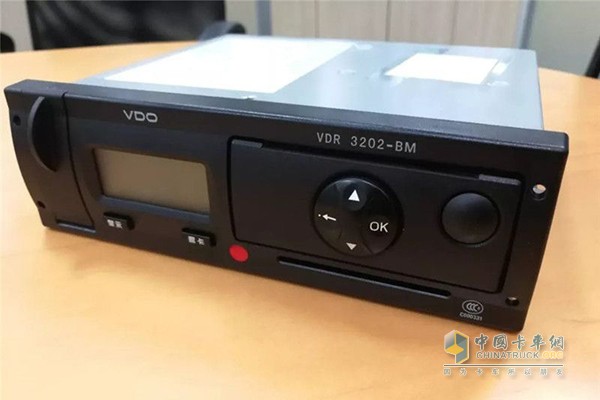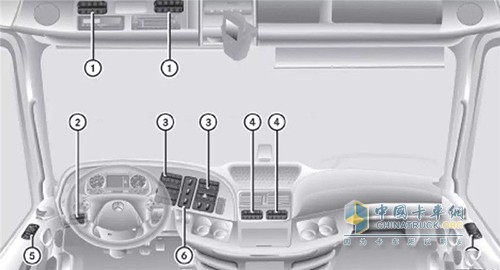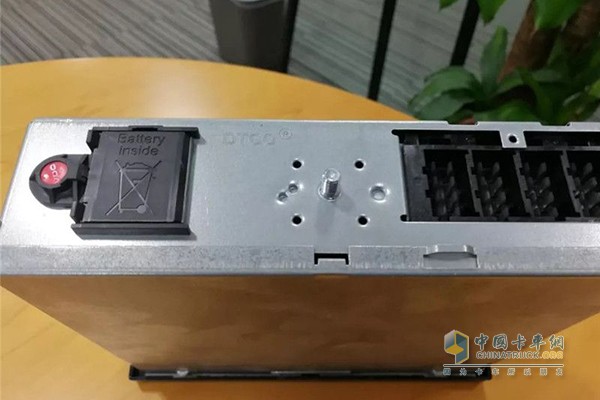The driving recorder is a device for recording the driving data of the vehicle, and is not an in-vehicle video driving recorder for preventing the occurrence of bumping. Its function is very similar to that of the aircraft's flight recorder, so many practitioners in the industry also call it "black box." "Black Box" adds a sense of mystery to it. In fact, like the black box of the plane, it is not black, and its appearance is completely interchangeable with the 1DIN radio installation position. More aptly, its mission and legal significance are the same as the black box on the plane. Heavy vehicles must install this component, otherwise the vehicle registration cannot be performed. Traffic accidents caused by heavy vehicles have caused great harm to the society. The two main factors leading to accidents are speed and fatigue driving. The state has enacted laws to force the monitoring of these two data to carry out risk prevention and control. This device can record the vehicle's driving speed and driving time (speed >0) in real time, and the police can easily retrieve and check. If there is any speeding or fatigue driving behavior, the driver and the team manager will be punished according to law. To achieve a reduction in accident rates. Car use and accidents are far less harmful to the society than trucks, so there is no mandatory installation of this monitoring device. For trucks, it is necessary to use legal force to ensure driving safety. In order to ensure the seriousness of the law and to avoid the loopholes of some people who are lucky enough to drill technology, TCO is theoretically designed to be non-detachable and avoidable technical design. If some people are clever and want to secretly remove the TCO, can they be out of regulation? Then you can underestimate the seriousness of the law. The most critical speed V signal of the vehicle must be first to the TCO, and then distributed to other computer modules through the TCO. The vehicle can drive normally. If you use the smart TCO to remove the TCO, you cannot send the speed V signal to other modules of the vehicle. As a result, it is impossible to drive normally, and various alarms and malfunctions will occur in the vehicle dashboard. The mandatory use of the TCO by the law not only restricts the function of the vehicle, but also has strict regulations for daily use: for example, the TCO built-in battery must be replaced every year. The second battery should be sealed after installation to prevent anyone from disassembling it. The power supply requirements for the TCO device are also very strict. In order to ensure that it is absolutely in a state of electricity, the law requires strict dual-channel simultaneous power supply (built-in battery + vehicle battery). Mercedes-Benz trucks strictly abide by the state's TCO laws. And the root cause of not installing the battery main switch outside the special industry. It is for this reason that TCO is constantly consuming battery power, and Mercedes-Benz truck battery maintenance is definitely not a sloppy thing. (will be introduced in detail later) The above illustration shows the TCO of the driving recorder on the Mercedes-Benz MP3. With the different versions, there are other kinds of TCOs that may appear in everyone's car, no matter what it looks like, the most important and core functions. It is exactly the same as obeying the law. TCO alarms and usage are described in more detail later. The little friend said, you are too alarmist. In fact, where is the trouble? I have been driving this car for so many years. Whatever the battery is, except for someone who takes a look at the annual inspection, it almost does not exist. Here I can only say that I hope that everyone will be a good citizen who is law-abiding! Reprinting the article does not represent the viewpoint of this site. Vertical machining center refers to a machining center with a spindle perpendicular to the worktable. Its structural form is mostly a fixed column, and the worktable is rectangular without indexing rotation function. It is suitable for machining disk, sleeve, and plate parts. The vertical machining center worktable is a T-groove worktable with a cross slide structure, which has two sets of motion mechanisms responsible for moving perpendicular to each other. The X-axis feed worktable is covered by the guide rail responsible for Y-axis feed. Vertical Machining Centers generally have three linear motion coordinate axes and can be equipped with a rotary table rotating along the horizontal axis on the workbench for machining spiral parts. Vertical Machining Center,Cnc Milling Machining Center,Machining Center For Metal,Vertical Machine Dongguan Liyang Intelligent Technology Co., Ltd , https://www.leyomachine.com This is commonly known as the "black box" - Vehicle Driving Recorder (TCO)
This is commonly known as the "black box" - Vehicle Driving Recorder (TCO)  Mercedes-Benz truck's black box is usually installed in the top of the head parallel to the radio, easy for the driver to insert the card operation
Mercedes-Benz truck's black box is usually installed in the top of the head parallel to the radio, easy for the driver to insert the card operation  The photo behind the TCO, see the obvious built-in battery logo
The photo behind the TCO, see the obvious built-in battery logo  The red button is a one-time seal. If someone moves the seal, it is illegal.
The red button is a one-time seal. If someone moves the seal, it is illegal.
Vertical machining centers characteristics:
1. Vertical machining centers structural characteristics: Vertical machining centers refer to spindle perpendicular to the workbench, with a relatively simple structure, small footprint, and relatively low price. However, due to the spindle being perpendicular to the worktable, the rotation axis of the spindle is perpendicular to the worktable, making the clamping and machining operations of the workpiece more convenient. Vertical machining centers are usually suitable for processing small workpieces and parts that require high precision.
2. Vertical machining centers application characteristics: Due to its simple structure, small footprint, and low price, vertical machining centers are usually suitable for processing small and medium-sized parts. It can perform various machining operations such as drilling, milling, turning, and grinding, as well as precision and semi precision machining with high precision requirements. Due to the fact that the spindle of a vertical machining center is perpendicular to the worktable, it is more convenient to clamp the workpiece and also helps to protect the tool and workpiece from damage.
3. Vertical machining centers processing characteristics: Due to its simple structure, small footprint, and low price, vertical machining centers are usually suitable for fine machining of small and medium-sized parts and high-precision machining of parts. It can perform various machining operations such as high-precision drilling, milling, turning, and grinding, as well as precision and semi precision machining with high precision requirements. Due to the fact that the spindle of a vertical machining center is perpendicular to the worktable, it is more convenient to clamp the workpiece and also helps to protect the tool and workpiece from damage.
The most indispensable part of a truck - TCO
TCO is the English abbreviation for Tachograph. The little friend will ask, what is this stuff? Why hasn’t this been seen in the car? Is it used for it?